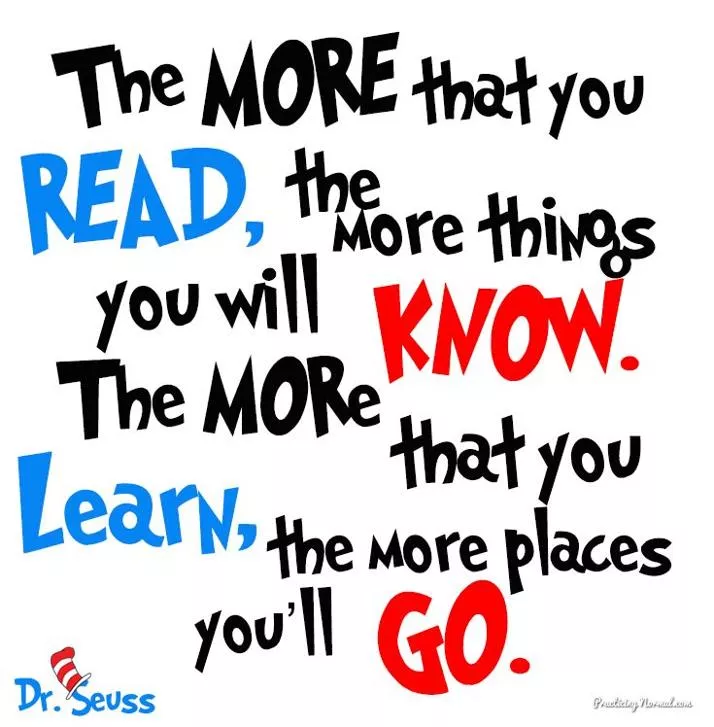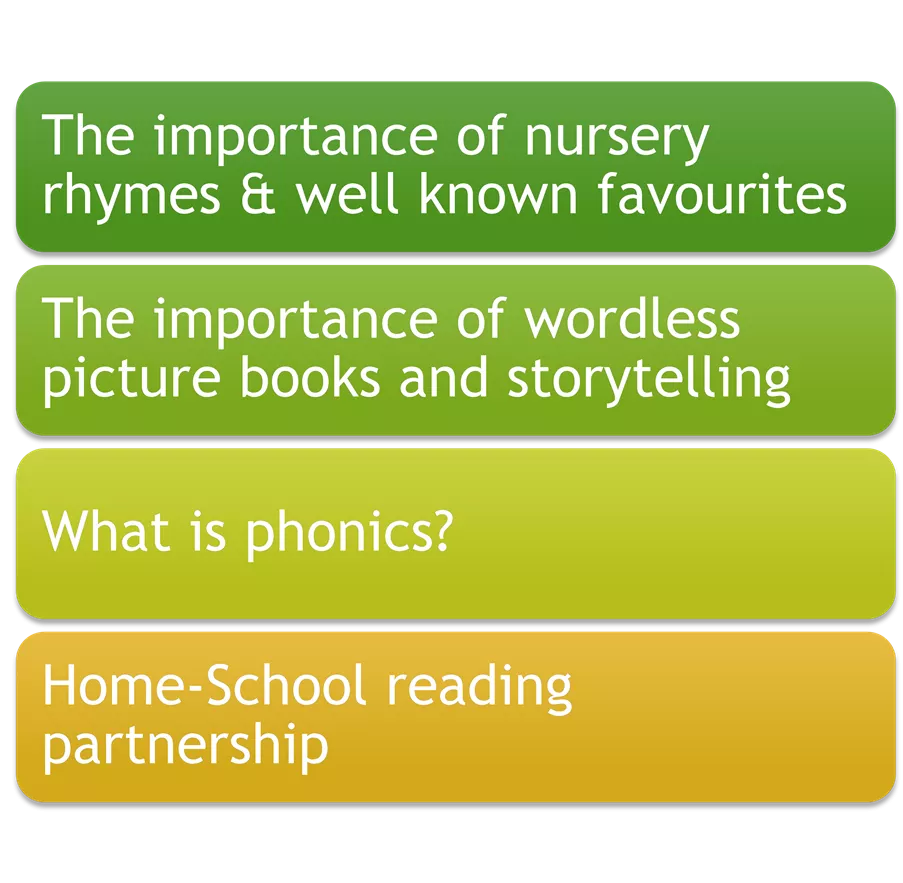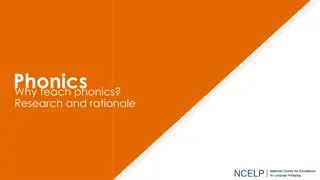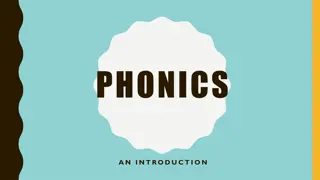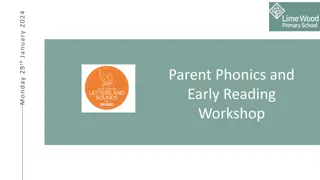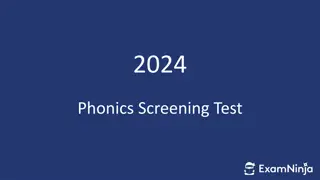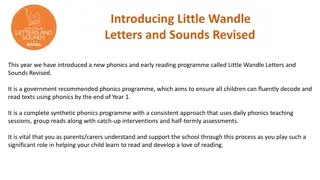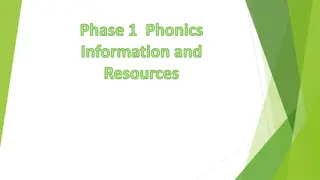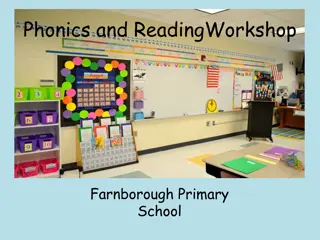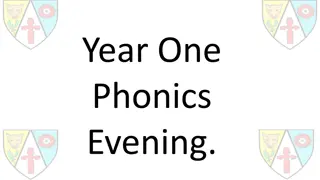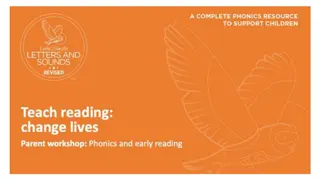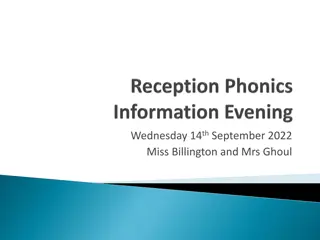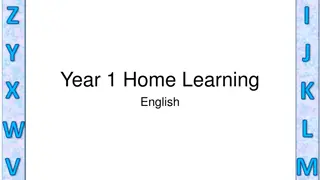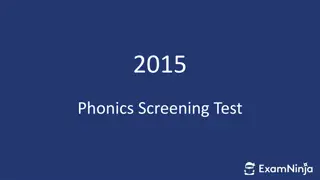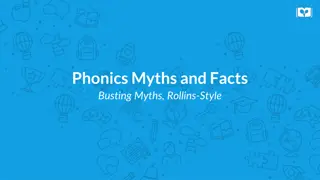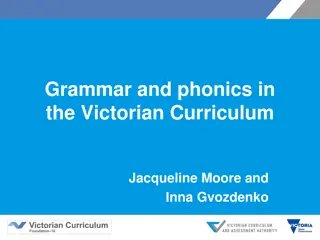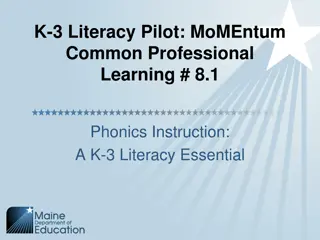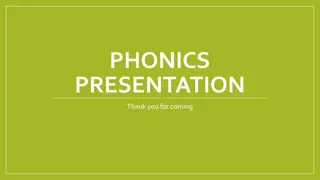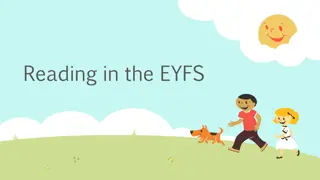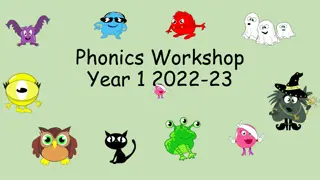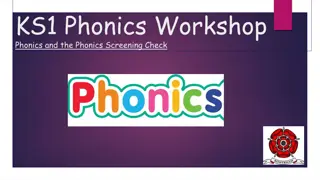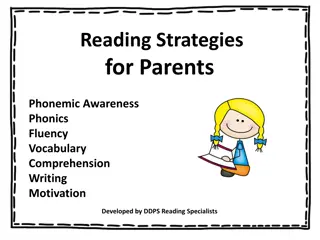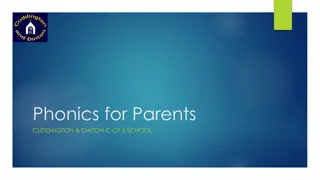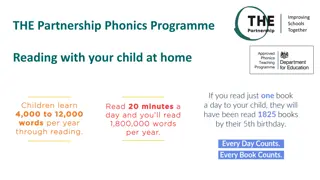Early Reading & Phonics Workshop Overview
In this workshop, explore the significance of nursery rhymes, wordless picture books, and storytelling in fostering early reading skills. Discover the role nursery rhymes play in introducing phonics and enhancing language development, and how wordless picture books aid in sparking children's imagination and storytelling abilities. Uncover the importance of engaging children in language-rich conversations through these literary tools. Get insights into home-school reading partnerships and ideas for interactive learning activities to enhance reading proficiency.
Download Presentation

Please find below an Image/Link to download the presentation.
The content on the website is provided AS IS for your information and personal use only. It may not be sold, licensed, or shared on other websites without obtaining consent from the author. Download presentation by click this link. If you encounter any issues during the download, it is possible that the publisher has removed the file from their server.
E N D
Presentation Transcript
Early Reading & Phonics Workshop
The importance of nursery rhymes & well known favourites The importance of wordless picture books and storytelling What we will cover today: What is phonics? Home-School reading partnership
Nursery rhymes are short & easy to repeat. As children recite nursery rhymes, they learn new words and how to pronounce them. Nursery Rhymes Nursery rhymes provide an early introduction to phonics (the ability to hear, identify and manipulate letter sounds). They develop rhythm, rhyming patterns, repetition and alliteration to make them fun and easy to remember.
Short nursery rhymes often tell a story with a beginning, middle and end. It helps children to follow a sequence of events, a skill they need when reading and writing. Nursery Rhymes Nursery rhymes are an early form of poetry and they introduce children to the rules and patterns. Children who know eight or more nursery rhymes by the age of four improve their reading and spelling.
See the handout for popular nursery rhymes & games to sing and play with your child at home.
Wordless picture books are told entirely through their pictures. Wordless Picture Books They offer opportunities for language-rich conversations with young children. Wordless books reinforce the idea that the story and pictures are connected.
They develop childrens storytelling skills and encourage their imagination to grow. Wordless Picture Books Storytelling skills can be modelled to the children, with a suggestion of different story ideas.
See the handout for some of the best wordless picture books to share with young children.
Children are taught to read by breaking words down into separate sounds (phonemes). They are taught to read by blending sounds together to read the whole word. What is phonics? There are around 40 different sounds that children will learn over time.
Phoneme: A sound made up of a letter or group of letters. Digraph: Two letters making one sound e.g. ow in cow . What is phonics? Trigraph: Three letters making one sound e.g. igh in light . Split Digraphs: Two vowels making one sound with a consonant in between e.g. i_e in bike .
Phase 1 is key to giving children a solid foundation for learning phonics. It includes: Sound discrimination e.g. environmental sounds, instrumental sounds & body percussion. What is phonics? Rhythm & rhyme. Alliteration & playing with words e.g. sizzling sausages.
Voice sounds e.g. weeeee, drip drop. What is phonics? Oral segmenting & blending e.g. b-b-b-ball, get your c-oa-t coat. Children in Nursery will focus on phase 1 and giving children these early experiences.
The sounds are then taught across phases 2-5 from Reception to Year 2. See the handout for the order of sounds across the phases.
Children also learn to read tricky words that cannot be broken down (segmented). These are grouped into words across the phases and taught explicitly. What is phonics? Children are also taught common exception words in both years 1 & 2.
See the handout for the tricky & common exception words.
Children take part in daily story times and are exposed to a wide range of texts. Home- School Reading Partnership Children from nursery to year 2 have weekly library sessions, allowing them to borrow books of interest. Children in Reception read with their teacher on a weekly basis.
Children in Key Stage 1 take part in daily guided reading sessions, either in small groups or whole class. Home- School Reading Partnership They are exposed to texts beyond a level at which they can read independently. Children also read 1:1 with their teacher on a regular basis.
Children in Reception and Key Stage 1 receive daily phonics teaching for both reading & spelling. Home- School Reading Partnership The learning is tailored to every child s needs to allow them to make progress from their starting points. Progress is carefully tracked and children receive interventions where appropriate.
All children have a reading diary and an individual reading book. It is expected that all children read at home with an adult. This should be at least 5 times across a week. Home- School Reading Partnership Reading sessions at home only need to be short; 5 minutes is sufficient. Children who read regularly at home make more progress in their reading.
Re-reading is important for fluency. Children should read a text more than once to develop their confidence. Home- School Reading Partnership Comprehension is as important as word reading. Children should understand what they have read. Above all, reading should be a fun and enjoyable experience!
See the handout for key questions to ask during reading.
Any questions?
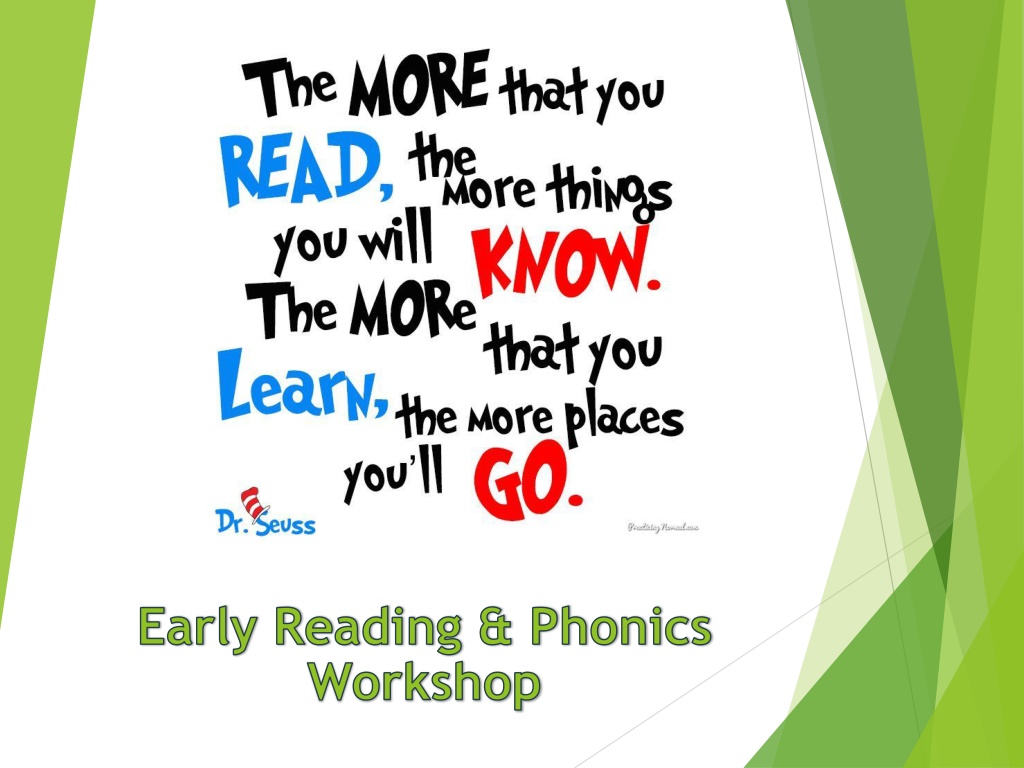
 undefined
undefined

